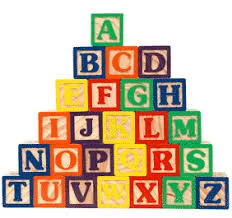(The post will take you 4 minutes and 43 seconds to read.)
I've been reading articles about a big issue: the way we teach writing in school/college is broken. Many students aren't learning to write well. Businesses are complaining loudly.
These articles suggest fixes, most often GETTING BACK TO BASICS. But in these articles, I see a glaring problem: they have a wrongheaded or outdated idea about WHAT THE BASICS ACTUALLY ARE!
Yes, as ridiculous and as boastful as this sounds, I do have a better idea. And it's fairly simple. In fact, I have a few better ideas....
REDEFINE "THE BASICS"
Many of the articles on students' poor writing skills blame a lack of time allotted for practice in writing (time for writing practice in the school/college curriculum is very limited). But what if there were enough time...what should students be learning about writing and how should they be practicing? Many of the articles recommend STARTING FROM THE GROUND UP.
By this, the articles usually mean teaching the rules of grammar and punctuation, or, for the more adventurous, dedicating classes to writing correct sentences.
I love grammar way more than the next gal/guy. And I'm wild about learning everything I can know about building sentences. But there's a huge problem with these START-FROM-THE-GROUND-UP proposals...
...they don't know what "the ground" is or which way is "up"!
The ground, too obviously, is NOT grammatical correctness, proper punctuation, or smooth sentences. It's CONTENT!
We need to recognize the grammar of generating useful content, as well as the grammar of presenting the useful content in the way that best helps the real reader.
And thus we hit ground zero, the number one problem, the reason the way we teach writing in school/college is broken: THERE'S NO REAL READER WHO REALLY NEEDS THE INFORMATION.
Learning to write for REAL readers who really need the information may seem trivial, but it's at the heart of effective writing practice.
Without a real reader who really needs the information to deal with a real issue, how is it even possible to judge whether the CONTENT in a piece of writing is effective? (I prefer the simple word "useful," and the primary judge of the effectiveness/usefulness of the content of a piece of writing should never be the teacher; it should be the real reader who really needs the information to deal with a real issue.)
The real reader is the only one who can say for sure whether the content and how the content is presented actually work--are useful. Teachers need to STOP trying to fill in for phantom readers who exist only in the imagination.
New graduates who hit the workplace are challenged to write effectively and chastised by their organizations--or sent to training--because they suddenly have to start writing for real people who really need the information to deal with a real issue. It could be a simple email, even a text. It could be a million-dollar RFP, or an organization-defining white paper. It could be any piece of writing. At the end of the day (COB), it must provide useful information to the real reader. That's the sine qua non.
Teach students the NEW BASICS of writing in the digital age, in the connection economy.
Here's a quick checklist of these new basics, starting from "the ground" up!
- CONTENT--use question-factoring to help students learn to generate useful content for real people (who really need real information to deal with a real problem). Keep the reader's LEVEL OF INTEREST HIGH.
- ORGANIZATION--teach deductive structure.
- DOCUMENT DESIGN--help students learn to DESIGN documents so key information receives proper emphasis and readers have an easy time finding and grasping the information. Keep the reader's LEVEL OF EFFORT LOW.
- Paragraphs--teach deductive paragraphs; unified, appropriately developed supporting sentences; coherence using logic markers and the known/new contract.
- Sentences--show how our minds are physically wired to pull information from sentences in just one way: THE SENTENCE CORE (not just S-V-O! but ACTOR-ACTION-RECEIVER or X=Y); helpful subordination/coordination--a.k.a., "sentence branching"; conciseness through limiting nominalizations.
- Word Choices--help students understand precision and tone and, above all, what Plain English really is (not dumbing down or loosing nuance and complexity).
- Mechanics--yes, teach FUNCTIONAL grammar and practical punctuation.
So...that's where we need to begin!
All the lovely teachers of writing across the country/world have nothing but heart! They are also full of great ideas about and have lots of experience in how to teach writing. But let's ban the "essay" from our list of possible assignments (NO REAL READER!). Essays can be taught much later on to the actually advanced writers.
Let's assign real writing for a real reader who really needs the information. If you have problems with that idea, email me (harvey@qcgwrite.com) and I'll explain. It's CRUCIAL!
Then start at ground zero: useful content! Then teach specific techniques for presenting that content.
Okay...see my textbook Mastering Workplace Writing (https://www.amazon.com/Mastering-Workplace-Writing-Harvey-Lillywhite/dp/0692520082/ref=sr_1_1?ie=UTF8&qid=1533834729&sr=8-1&keywords=mastering+workplace+writing). See my 200-page ebook, Mindful Writing at Work (http://qcgwrite.com/mindful-writing-at-work/).
